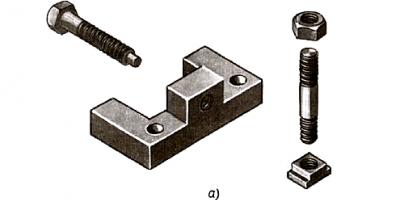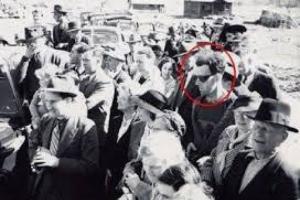Sound is sound waves that cause vibrations of tiny particles of air, other gases, and liquid and solid media. Sound can only arise where there is a substance, no matter what state of aggregation it is in. In vacuum conditions, where there is no medium, sound does not propagate, because there are no particles that act as distributors of sound waves. For example, in space. Sound can be modified, altered, turning into other forms of energy. Thus, sound converted into radio waves or electrical energy can be transmitted over distances and recorded on information media.
Sound wave
The movements of objects and bodies almost always cause fluctuations in the environment. It doesn't matter whether it's water or air. During this process, the particles of the medium to which the vibrations of the body are transmitted also begin to vibrate. Sound waves arise. Moreover, movements are carried out in forward and backward directions, progressively replacing each other. Therefore, the sound wave is longitudinal. There is never any lateral movement up and down in it.
Characteristics of sound waves
Like any physical phenomenon, they have their own quantities, with the help of which properties can be described. The main characteristics of a sound wave are its frequency and amplitude. The first value shows how many waves are formed per second. The second determines the strength of the wave. Low-frequency sounds have low frequency values, and vice versa. The frequency of sound is measured in Hertz, and if it exceeds 20,000 Hz, then ultrasound occurs. There are plenty of examples of low-frequency and high-frequency sounds in nature and the world around us. The chirping of a nightingale, the rumble of thunder, the roar of a mountain river and others are all different sound frequencies. The amplitude of the wave directly depends on how loud the sound is. The volume, in turn, decreases with distance from the sound source. Accordingly, the further the wave is from the epicenter, the smaller the amplitude. In other words, the amplitude of a sound wave decreases with distance from the sound source.

Sound speed
This indicator of a sound wave is directly dependent on the nature of the medium in which it propagates. Both humidity and air temperature play a significant role here. In average weather conditions, the speed of sound is approximately 340 meters per second. In physics, there is such a thing as supersonic speed, which is always greater than the speed of sound. This is the speed at which sound waves travel when an aircraft moves. The plane moves at supersonic speed and even outruns the sound waves it creates. Due to the pressure gradually increasing behind the aircraft, a shock wave of sound is formed. The unit of measurement for this speed is interesting and few people know it. It's called Mach. Mach 1 is equal to the speed of sound. If a wave travels at Mach 2, then it travels twice as fast as the speed of sound.

Noises
There is constant noise in human daily life. The noise level is measured in decibels. The movement of cars, the wind, the rustling of leaves, the interweaving of people's voices and other sound noises are our daily companions. But the human auditory analyzer has the ability to get used to such noise. However, there are also phenomena that even the adaptive abilities of the human ear cannot cope with. For example, noise exceeding 120 dB can cause pain. The loudest animal is the blue whale. When it makes sounds, it can be heard over 800 kilometers away.

Echo
How does an echo occur? Everything is very simple here. A sound wave has the ability to be reflected from different surfaces: from water, from a rock, from walls in an empty room. This wave returns to us, so we hear secondary sound. It is not as clear as the original one because some of the energy in the sound wave is dissipated as it travels toward the obstacle.
Echolocation
Sound reflection is used for various practical purposes. For example, echolocation. It is based on the fact that with the help of ultrasonic waves it is possible to determine the distance to the object from which these waves are reflected. Calculations are made by measuring the time it takes for ultrasound to travel to a location and return. Many animals have the ability to echolocation. For example, bats and dolphins use it to search for food. Echolocation has found another application in medicine. During ultrasound examinations, a picture of a person’s internal organs is formed. The basis of this method is that ultrasound, entering a medium other than air, returns back, thus forming an image.

Sound waves in music
Why do musical instruments make certain sounds? Guitar strumming, piano strumming, low tones of drums and trumpets, the charming thin voice of a flute. All these and many other sounds arise due to air vibrations or, in other words, due to the appearance of sound waves. But why is the sound of musical instruments so diverse? It turns out that this depends on several factors. The first is the shape of the tool, the second is the material from which it is made.
Let's look at this using string instruments as an example. They become a source of sound when the strings are touched. As a result, they begin to vibrate and send different sounds into the environment. The low sound of any stringed instrument is due to the greater thickness and length of the string, as well as the weakness of its tension. And vice versa, the more tightly the string is stretched, the thinner and shorter it is, the higher the sound obtained as a result of playing.
Microphone action
It is based on the conversion of sound wave energy into electrical energy. In this case, the current strength and the nature of the sound are directly dependent. Inside any microphone there is a thin plate made of metal. When exposed to sound, it begins to perform oscillatory movements. The spiral to which the plate is connected also vibrates, resulting in an electric current. Why does he appear? This is because the microphone also has built-in magnets. When the spiral oscillates between its poles, an electric current is generated, which goes along the spiral and then to a sound column (loudspeaker) or to equipment for recording on an information medium (cassette, disk, computer). By the way, the microphone in the phone has a similar structure. But how do microphones work on landlines and mobile phones? The initial phase is the same for them - the sound of the human voice transmits its vibrations to the microphone plate, then everything follows the scenario described above: a spiral, which, when moving, closes two poles, a current is created. What's next? With a landline telephone, everything is more or less clear - just like in a microphone, the sound, converted into electric current, runs through the wires. But what about a cell phone or, for example, a walkie-talkie? In these cases, the sound is converted into radio wave energy and hits the satellite. That's all.

Resonance phenomenon
Sometimes conditions are created when the amplitude of vibrations of the physical body increases sharply. This occurs due to the convergence of the values of the frequency of forced oscillations and the natural frequency of oscillations of the object (body). Resonance can be both beneficial and harmful. For example, to get a car out of a hole, it is started and pushed back and forth in order to cause resonance and give the car inertia. But there have also been cases of negative consequences of resonance. For example, in St. Petersburg, about a hundred years ago, a bridge collapsed under soldiers marching in unison.
Sound sources.
Sound vibrations
Lesson summary.
1.Organizational moment
Hello guys! Our lesson has wide practical application in everyday practice. Therefore, your answers will depend on your observation skills in life and your ability to analyze your observations.
2. Repetition of basic knowledge.
Slides No. 1, 2, 3, 4, 5 are displayed on the projector screen (Appendix 1).
Guys, here is a crossword puzzle, after solving it you will learn the key word of the lesson.
1st fragment: name a physical phenomenon
2nd fragment: name the physical process
3rd fragment: name a physical quantity
4th fragment: name a physical device
R | Z | N | ||||||||
IN | ||||||||||
U | ||||||||||
TO |
Pay attention to the highlighted word. This word is “SOUND”, it is the key word of the lesson. Our lesson is devoted to sound and sound vibrations. So, the topic of the lesson is “Sound sources. Sound vibrations." In the lesson you will learn what is the source of sound, what sound vibrations are, their occurrence and some practical applications in your life.
3. Explanation of new material.
Let's conduct an experiment. Purpose of the experiment: to find out the causes of sound.
Experiment with a metal ruler(Appendix 2).
What did you observe? What can be concluded?
Conclusion: a vibrating body creates sound.
Let's carry out the following experiment. Purpose of the experiment: to find out whether sound is always created by a vibrating body.
The device you see in front of you is called fork.
Experiment with a tuning fork and a tennis ball hanging on a string(Appendix 3) .
You hear the sound that the tuning fork makes, but the vibration of the tuning fork is not noticeable. To make sure that the tuning fork is oscillating, we carefully move it towards a shady ball suspended on a thread and we will see that the oscillations of the tuning fork are transferred to the ball, which begins to move periodically.
Conclusion: sound is generated by any vibrating body.
We live in an ocean of sounds. Sound is created by sound sources. There are both artificial and natural sources of sound. Natural sound sources include vocal cords (Appendix 1 - slide No. 6). The air we breathe leaves the lungs through the respiratory tract into the larynx. The larynx contains the vocal cords. Under the pressure of exhaled air they begin to oscillate. The role of the resonator is played by the oral and nasal cavities, as well as the chest. For articulate speech, in addition to the vocal cords, you also need the tongue, lips, cheeks, soft palate and epiglottis.
Natural sources of sound also include the buzzing of a mosquito, fly, bee ( wings flutter).
Question:what creates sound.
(The air in the ball is under pressure in a compressed state. Then it expands sharply and creates a sound wave.)
So, sound creates not only a oscillating, but also a sharply expanding body. Obviously, in all cases of sound occurrence, layers of air move, i.e., a sound wave arises.
The sound wave is invisible, it can only be heard and also registered by physical instruments. To register and study the properties of a sound wave, we use a computer, which is currently widely used by physicists for research. A special research program is installed on the computer, and a microphone is connected that picks up sound vibrations (Appendix 4). Look at the screen. On the screen you see a graphical representation of the sound vibration. What does this graph represent? ( sinusoid)
Let's conduct an experiment with a tuning fork with a feather. We hit the tuning fork with a rubber mallet. Students see the vibration of the tuning fork, but do not hear any sound.
Question:Why are there vibrations, but you don’t hear the sound?
It turns out, guys, that the human ear perceives sound ranges ranging from 16 Hz to Hz, this is audible sound.
Listen to them through a computer and notice the change in the frequencies of the range (Appendix 5). Pay attention to how the shape of the sine wave changes when the frequency of sound oscillations changes (the oscillation period decreases, and therefore the frequency increases).
There are sounds that are inaudible to the human ear. These are infrasound (oscillation range less than 16 Hz) and ultrasound (range greater than Hz). You see a diagram of frequency ranges on the board, sketch it in your notebook (Appendix 5). By studying infra and ultrasound, scientists have discovered many interesting features of these sound waves. Your classmates will tell us about these interesting facts (Appendix 6).
4. Consolidation of the studied material.
To reinforce the material learned in class, I suggest playing a TRUE-FALSE game. I read out the situation and you hold up a sign that says TRUE or FALSE and explain your answer.
Questions. 1. Is it true that the source of sound is any oscillating body? (right).
2. Is it true that in a hall filled with people the music sounds louder than in an empty one? (wrong, because the empty hall acts as a vibration resonator).
3. Is it true that a mosquito flaps its wings faster than a bumblebee? (correct, because the sound produced by a mosquito is higher, therefore the frequency of wing vibrations is higher).
4. Is it true that the vibrations of a sounding tuning fork die out faster if its leg is placed on a table? (correct, because the vibrations of the tuning fork are transmitted to the table).
5. Is it true that bats see using sound? (correct, because bats emit ultrasound and then listen to the reflected signal).
6. Is it true that some animals “predict” earthquakes using infrasound? (true, for example, elephants feel an earthquake several hours in advance and are extremely excited).
7. Is it true that infrasound causes mental disorders in people? (that’s right, in Marseille (France) a small factory was built next to the scientific center. Soon after its launch, strange phenomena were discovered in one of the scientific laboratories. After spending a couple of hours in its premises, the researcher became absolutely stupid: he had difficulty solving even a simple problem) .
And in conclusion, I suggest that you get the key words of the lesson from the cut letters by rearranging them.
KVZU – SOUND
RAMTNOCKE – TUNING FORK
TRYAKZUVLU – ULTRASOUND
FRAKVZUNI - INFRASOUND
OKLABEINYA – OSCILLATIONS
5. Summing up the lesson and homework.
Lesson summary. During the lesson we found out that:
That any vibrating body creates sound;
Sound travels through the air in the form of sound waves;
Sounds are audible and inaudible;
Ultrasound is an inaudible sound whose vibration frequency is above 20 kHz;
Infrasound is an inaudible sound with an oscillation frequency below 16 Hz;
Ultrasound is widely used in science and technology.
Homework:
1. §34, ex. 29 (Peryshkin 9th grade)
2. Continue the reasoning:
I hear the sound of: a) flies; b) a fallen object; c) thunderstorms, because...
I don’t hear the sound: a) from a climbing dove; b) from an eagle soaring in the sky, because...
With the help of this video lesson you can study the topic “Sound Sources. Sound vibrations. Pitch, timbre, volume." In this lesson you will learn what sound is. We will also consider the ranges of sound vibrations perceived by human hearing. Let's determine what can be the source of sound and what conditions are necessary for its occurrence. We will also study such sound characteristics as pitch, timbre and volume.
The topic of the lesson is devoted to sound sources and sound vibrations. We will also talk about the characteristics of sound - pitch, volume and timbre. Before talking about sound, about sound waves, let's remember that mechanical waves propagate in elastic media. The part of longitudinal mechanical waves that is perceived by the human hearing organs is called sound, sound waves. Sound is the mechanical waves perceived by the human hearing organs that cause sound sensations .
Experiments show that the human ear and human hearing organs perceive vibrations with frequencies from 16 Hz to 20,000 Hz. It is this range that we call sound. Of course, there are waves whose frequency is less than 16 Hz (infrasound) and more than 20,000 Hz (ultrasound). But this range, these sections are not perceived by the human ear.
Rice. 1. Hearing range of the human ear
As we said, the areas of infrasound and ultrasound are not perceived by the human hearing organs. Although they can be perceived, for example, by some animals and insects.
What's happened ? Sound sources can be any body that vibrates at a sound frequency (from 16 to 20,000 Hz)

Rice. 2. An oscillating ruler clamped in a vice can be a source of sound.
Let's turn to experience and see how a sound wave is formed. To do this we need a metal ruler, which we will clamp in a vice. Now, when we act on the ruler, we will be able to observe vibrations, but we will not hear any sound. And yet a mechanical wave is created around the ruler. Please note that when the ruler is moved to one side, an air seal is formed here. In the other direction there is also a seal. Air vacuum forms between these seals. Longitudinal wave - this is a sound wave consisting of compactions and rarefaction of air. The oscillation frequency of the ruler in this case is less than the sound frequency, so we do not hear this wave, this sound. Based on the experience we have just observed, at the end of the 18th century, a device called a tuning fork was created.

Rice. 3. Propagation of longitudinal sound waves from a tuning fork
As we have seen, sound appears as a result of vibrations of a body with a sound frequency. Sound waves propagate in all directions. There must be a medium between the human hearing aid and the source of sound waves. This medium can be gaseous, liquid, or solid, but it must be particles capable of transmitting vibrations. The process of transmitting sound waves must necessarily occur where there is matter. If there is no substance, we will not hear any sound.
For sound to exist you need:
1. Sound source
2. Wednesday
3. Hearing aid
4. Frequency 16-20000Hz
5. Intensity
Now let's move on to discussing sound characteristics. The first is pitch. Sound height - characteristic that is determined by the frequency of oscillations. The higher the frequency of the body that produces vibrations, the higher the sound will be. Let's look again at the ruler held in a vice. As we have already said, we saw vibrations, but did not hear any sound. If we now make the length of the ruler shorter, we will hear the sound, but it will be much more difficult to see the vibrations. Look at the line. If we act on it now, we will not hear any sound, but we will observe vibrations. If we shorten the ruler, we will hear a sound of a certain pitch. We can make the length of the ruler even shorter, then we will hear a sound of even higher pitch (frequency). We can observe the same thing with tuning forks. If we take a large tuning fork (also called a demonstration fork) and hit the legs of such a tuning fork, we can observe the vibration, but we will not hear the sound. If we take another tuning fork, then when we hit it we will hear a certain sound. And the next tuning fork, a real tuning fork, which is used to tune musical instruments. It makes a sound corresponding to the note A, or, as they also say, 440 Hz.
The next characteristic is the timbre of the sound. Timbre called sound color. How can this characteristic be illustrated? Timbre is the difference between two identical sounds performed by different musical instruments. You all know that we only have seven notes. If we hear the same note A played on a violin and on a piano, we can tell them apart. We can immediately tell which instrument created this sound. It is this feature - the color of the sound - that characterizes the timbre. It must be said that timbre depends on what sound vibrations are reproduced, in addition to the fundamental tone. The fact is that arbitrary sound vibrations are quite complex. They consist of a set of individual vibrations, they say vibration spectrum. It is the reproduction of additional vibrations (overtones) that characterizes the beauty of the sound of a particular voice or instrument. Timbre is one of the main and brightest manifestations of sound.
Another characteristic is volume. The volume of sound depends on the amplitude of vibrations. Let's take a look and make sure that loudness is related to the amplitude of vibrations. So, let's take a tuning fork. Let's do the following: if you hit the tuning fork weakly, the amplitude of vibrations will be small and the sound will be quiet. If you now hit the tuning fork harder, the sound will be much louder. This is due to the fact that the amplitude of the oscillations will be much greater. The perception of sound is a subjective thing, it depends on what kind of hearing aid is used and how a person feels.
List of additional literature:
Is the sound so familiar to you? // Quantum. - 1992. - No. 8. - P. 40-41. Kikoin A.K. About musical sounds and their sources // Quantum. - 1985. - No. 9. - P. 26-28. Elementary physics textbook. Ed. G.S. Landsberg. T. 3. - M., 1974.
With the help of this video lesson you can study the topic “Sound Sources. Sound vibrations. Pitch, timbre, volume." In this lesson you will learn what sound is. We will also consider the ranges of sound vibrations perceived by human hearing. Let's determine what can be the source of sound and what conditions are necessary for its occurrence. We will also study such sound characteristics as pitch, timbre and volume.
The topic of the lesson is devoted to sound sources and sound vibrations. We will also talk about the characteristics of sound - pitch, volume and timbre. Before talking about sound, about sound waves, let's remember that mechanical waves propagate in elastic media. The part of longitudinal mechanical waves that is perceived by the human hearing organs is called sound, sound waves. Sound is the mechanical waves perceived by the human hearing organs that cause sound sensations .
Experiments show that the human ear and human hearing organs perceive vibrations with frequencies from 16 Hz to 20,000 Hz. It is this range that we call sound. Of course, there are waves whose frequency is less than 16 Hz (infrasound) and more than 20,000 Hz (ultrasound). But this range, these sections are not perceived by the human ear.
Rice. 1. Hearing range of the human ear
As we said, the areas of infrasound and ultrasound are not perceived by the human hearing organs. Although they can be perceived, for example, by some animals and insects.
What's happened ? Sound sources can be any body that vibrates at a sound frequency (from 16 to 20,000 Hz)

Rice. 2. An oscillating ruler clamped in a vice can be a source of sound.
Let's turn to experience and see how a sound wave is formed. To do this we need a metal ruler, which we will clamp in a vice. Now, when we act on the ruler, we will be able to observe vibrations, but we will not hear any sound. And yet a mechanical wave is created around the ruler. Please note that when the ruler is moved to one side, an air seal is formed here. In the other direction there is also a seal. Air vacuum forms between these seals. Longitudinal wave - this is a sound wave consisting of compactions and rarefaction of air. The oscillation frequency of the ruler in this case is less than the sound frequency, so we do not hear this wave, this sound. Based on the experience we have just observed, at the end of the 18th century, a device called a tuning fork was created.

Rice. 3. Propagation of longitudinal sound waves from a tuning fork
As we have seen, sound appears as a result of vibrations of a body with a sound frequency. Sound waves propagate in all directions. There must be a medium between the human hearing aid and the source of sound waves. This medium can be gaseous, liquid, or solid, but it must be particles capable of transmitting vibrations. The process of transmitting sound waves must necessarily occur where there is matter. If there is no substance, we will not hear any sound.
For sound to exist you need:
1. Sound source
2. Wednesday
3. Hearing aid
4. Frequency 16-20000Hz
5. Intensity
Now let's move on to discussing sound characteristics. The first is pitch. Sound height - characteristic that is determined by the frequency of oscillations. The higher the frequency of the body that produces vibrations, the higher the sound will be. Let's look again at the ruler held in a vice. As we have already said, we saw vibrations, but did not hear any sound. If we now make the length of the ruler shorter, we will hear the sound, but it will be much more difficult to see the vibrations. Look at the line. If we act on it now, we will not hear any sound, but we will observe vibrations. If we shorten the ruler, we will hear a sound of a certain pitch. We can make the length of the ruler even shorter, then we will hear a sound of even higher pitch (frequency). We can observe the same thing with tuning forks. If we take a large tuning fork (also called a demonstration fork) and hit the legs of such a tuning fork, we can observe the vibration, but we will not hear the sound. If we take another tuning fork, then when we hit it we will hear a certain sound. And the next tuning fork, a real tuning fork, which is used to tune musical instruments. It makes a sound corresponding to the note A, or, as they also say, 440 Hz.
The next characteristic is the timbre of the sound. Timbre called sound color. How can this characteristic be illustrated? Timbre is the difference between two identical sounds performed by different musical instruments. You all know that we only have seven notes. If we hear the same note A played on a violin and on a piano, we can tell them apart. We can immediately tell which instrument created this sound. It is this feature - the color of the sound - that characterizes the timbre. It must be said that timbre depends on what sound vibrations are reproduced, in addition to the fundamental tone. The fact is that arbitrary sound vibrations are quite complex. They consist of a set of individual vibrations, they say vibration spectrum. It is the reproduction of additional vibrations (overtones) that characterizes the beauty of the sound of a particular voice or instrument. Timbre is one of the main and brightest manifestations of sound.
Another characteristic is volume. The volume of sound depends on the amplitude of vibrations. Let's take a look and make sure that loudness is related to the amplitude of vibrations. So, let's take a tuning fork. Let's do the following: if you hit the tuning fork weakly, the amplitude of vibrations will be small and the sound will be quiet. If you now hit the tuning fork harder, the sound will be much louder. This is due to the fact that the amplitude of the oscillations will be much greater. The perception of sound is a subjective thing, it depends on what kind of hearing aid is used and how a person feels.
List of additional literature:
Is the sound so familiar to you? // Quantum. - 1992. - No. 8. - P. 40-41. Kikoin A.K. About musical sounds and their sources // Quantum. - 1985. - No. 9. - P. 26-28. Elementary physics textbook. Ed. G.S. Landsberg. T. 3. - M., 1974.








